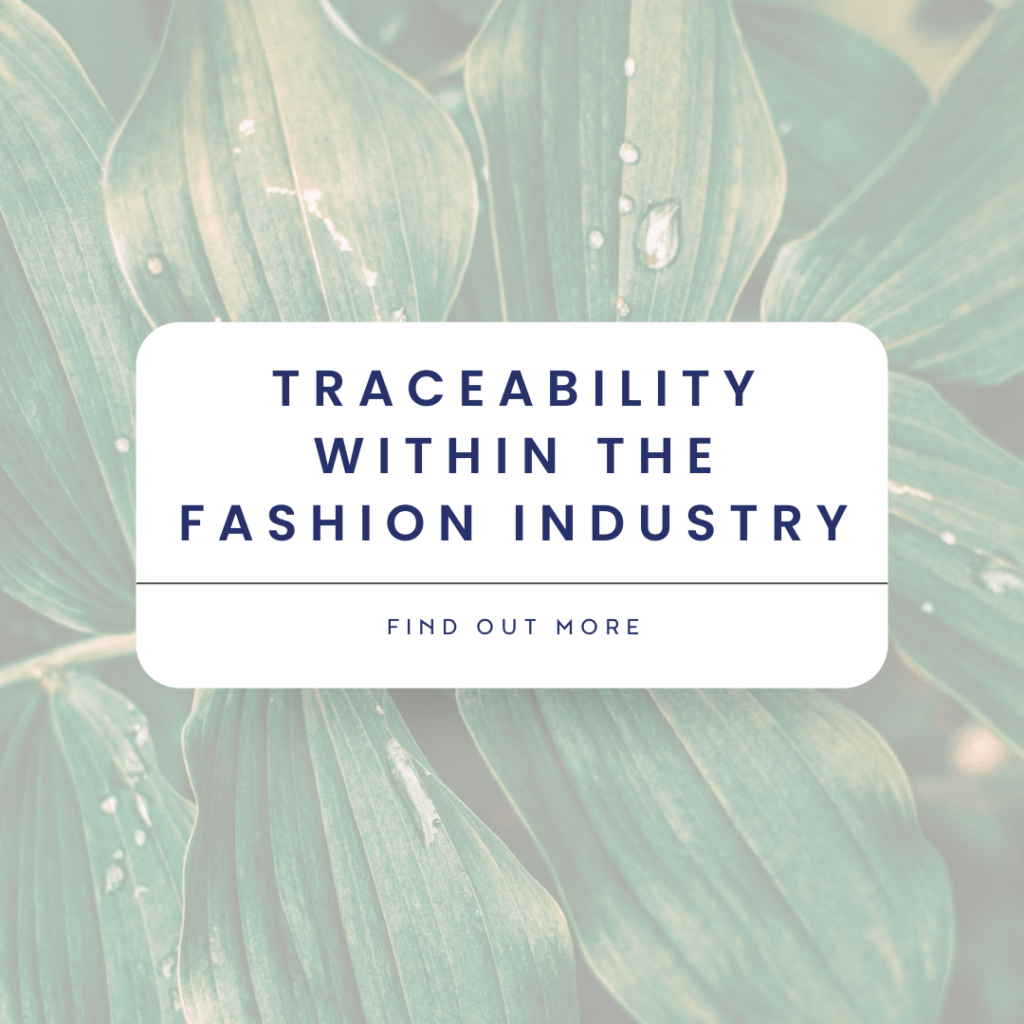Fashion Traceability
Fashion traceability and sustainability have become massive topics of discussion and due to this, their impact has created the biggest challenges for the fashion industry in a very long time. There are many levels to this issue including the social, environmental and economical traceability of supply chains and factories and their overall carbon footprints.
The major organisation protesting for traceability in the fashion industry is
Fashion Revolution. Fashion Revolution’s most notable protest is through creating the social media hashtag ‘#whomademyclothes’ which allows consumers to ask fashion brands about the supply chain details of the products they own. This non-profit has developed the criteria for assessing brand and retailer transparency.

This is called the FTI and assesses 250 of the world’s largest fashion brands according to what information they disclose about their social and environmental policies, practices and impacts, in their operations and supply chain.
‘The Index is a tool to push and incentivise the world’s largest fashion brands to be more transparent about their social and environmental efforts. Fashion Revolution believes that transparency is foundational to achieving systemic change in the global fashion industry, which is why we have been campaigning for it since 2014, and why we created this Index.’
Out of the 200 brands that Fashion Revolution has audited, there was an average score of 53 out of a possible 250 points. These results highlight the lack of transparency within the complex supply chain of a fashion company on a global scale.
The Fashion Transparency Index (FTI) measures the following key areas:
- Policy and Commitments
- Governance
- Traceability
- Know, Show and Fix
- Spotlight Issues
What are the issues that the FTI tackles?
- Fair Trade
- Well-being
- Living Wages
- Empowerment
- Gender Equality
- Business Accountability
- Sustainable livelihoods
- Good Working Conditions
- Environmental Sustainability

Environmental Issues
The environmental impact encompasses the lifecycle of a product, from the raw materials used in the manufacturing process to the disposal of the product. This takes into account the energy usage, water usage and air pollution involved in the lifecycle.
Social
The social impact considers the effects on the employees of the brand and throughout the supply chain regarding wages, well-being and working conditions. Also, the social impacts extend to the effects of the manufacturing processes on the well-being of those connected to it. For example, the effect on the dyeing process of a pair of jeans on the local water systems and people in that region.
Economic
The economic impact overlaps in terms of the living wages criteria. Meanwhile, some brands challenge the traditional mark-up price that brands and retailers enforce on products. For example,
Everlane counteracts the traditional retail pricing system by showing the cost of the materials, hardware, labour, duties and transport with a lower markup.
What details do brands need to include to score well on the FTI criteria?
- Details of manufacturers and suppliers including those related to raw materials
- Publish Company’s Sustainability teams contact details to enable the consumer to brand transparency
- Disclose steps the company is making to build sustainable business relationships with suppliers and manufacturers
- Environmental Impact Footprint
- Answer customers call to action on tracing their products
Fashion Revolution doesn’t intend to simply call out fashion brands for their lack of traceability, but to support them in becoming more transparent and sustainable in their practices.
What is holding back the fashion industry from complete traceability?
- The biggest issues for retailers and brands to trace their transparency is the supply chain
- The supply chain is unable to trace the source of raw materials
- The cost of implementing a tracing system
- The competitive strategy of keeping their suppliers and manufacturers secret
If you are interested in the topic of sustainable fashion, check out our other blog posts including a guide to fashion certifications and how sustainable fashion renting truly is.
 This is called the FTI and assesses 250 of the world’s largest fashion brands according to what information they disclose about their social and environmental policies, practices and impacts, in their operations and supply chain.
‘The Index is a tool to push and incentivise the world’s largest fashion brands to be more transparent about their social and environmental efforts. Fashion Revolution believes that transparency is foundational to achieving systemic change in the global fashion industry, which is why we have been campaigning for it since 2014, and why we created this Index.’
Out of the 200 brands that Fashion Revolution has audited, there was an average score of 53 out of a possible 250 points. These results highlight the lack of transparency within the complex supply chain of a fashion company on a global scale.
This is called the FTI and assesses 250 of the world’s largest fashion brands according to what information they disclose about their social and environmental policies, practices and impacts, in their operations and supply chain.
‘The Index is a tool to push and incentivise the world’s largest fashion brands to be more transparent about their social and environmental efforts. Fashion Revolution believes that transparency is foundational to achieving systemic change in the global fashion industry, which is why we have been campaigning for it since 2014, and why we created this Index.’
Out of the 200 brands that Fashion Revolution has audited, there was an average score of 53 out of a possible 250 points. These results highlight the lack of transparency within the complex supply chain of a fashion company on a global scale.





